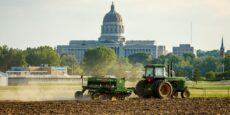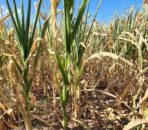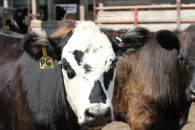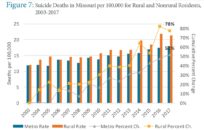Missouri has seen a lot of changes in its first 200 years. Since gaining statehood on Aug. 10, 1821, we have survived countless floods, droughts, a Civil War, two World Wars, and many other tragedies. We have also seen tremendous innovation, economic development, and population growth.
Amidst all of this change, though, a select few Missouri families have quietly worked the land generation after generation. To celebrate Missouri’s bicentennial, Missouri Farm Bureau partnered with University of Missouri Extension and the University of Missouri’s College of Agriculture, Food and Natural Resources to identify farms that have been in continuous operation within one family since before Missouri’s statehood.
For this recognition, MU Extension reviewed information on nearly 10,000 Missouri farms that have remained in the same family for 100 or more years. From this impressive group, the researchers documented a mere 28 that were farmed in 1821 by a direct ancestor of today’s owners. We are proud to honor these 28 farm families by designating their operations as “Missouri Founding Farms.”
In 1821, Missouri was truly the frontier. For its first 14 years, Missouri was the only state west of the Mississippi. Kansas was not admitted to the union for another four decades. Only the most adventurous of pioneers had ventured this far west. The 1820 census identified only 66,586 Missouri residents — only about 1 percent of our current population of 6.1 million.
It’s hard to imagine how difficult farm life must have been in the 1820s. The original founding farmers moved far away from what they considered “civilized society.” They made their homesteads mainly along existing trade and travel routes. Twenty-four Founding Farms are in counties bordering the Mississippi or Missouri Rivers, which were the lifeblood of commerce in those early days. Only eight of the farms lie upriver from Jefferson City, which was not incorporated as a city until four years after statehood. These original farm families were completely on their own.
Over the following 200 years, millions more people moved into Missouri. The number of farmers swelled as land was cleared and used for crops and livestock. My own ancestors, five generations back, moved to St. Clair County and began farming. Mechanization and efficiency later turned that trend around, reducing the number of active farmers to less than two percent of today’s population. Missouri Farm Bureau itself, the first Farm Bureau in America, wasn’t founded until 1915, nearly halfway through these families’ time on the land. But through it all, these 28 families stuck out the hard times and kept farming the land.
We look forward to celebrating these 28 incredible families at the 2021 Missouri State Fair in Sedalia. Stop by Mizzou Central or the Farm Bureau building to learn more about their histories and the rich agricultural tradition their families helped start. With a bit of luck and a lot of hard work, I hope each of these farms stays in the same families’ hands for another 200 years. Missouri Farm Bureau will be next to them every step of the way, working to make our state even better for family farms.

Garrett Hawkins, a farmer from Appleton City, is the president of the Missouri Farm Bureau, the state’s largest farm organization.












